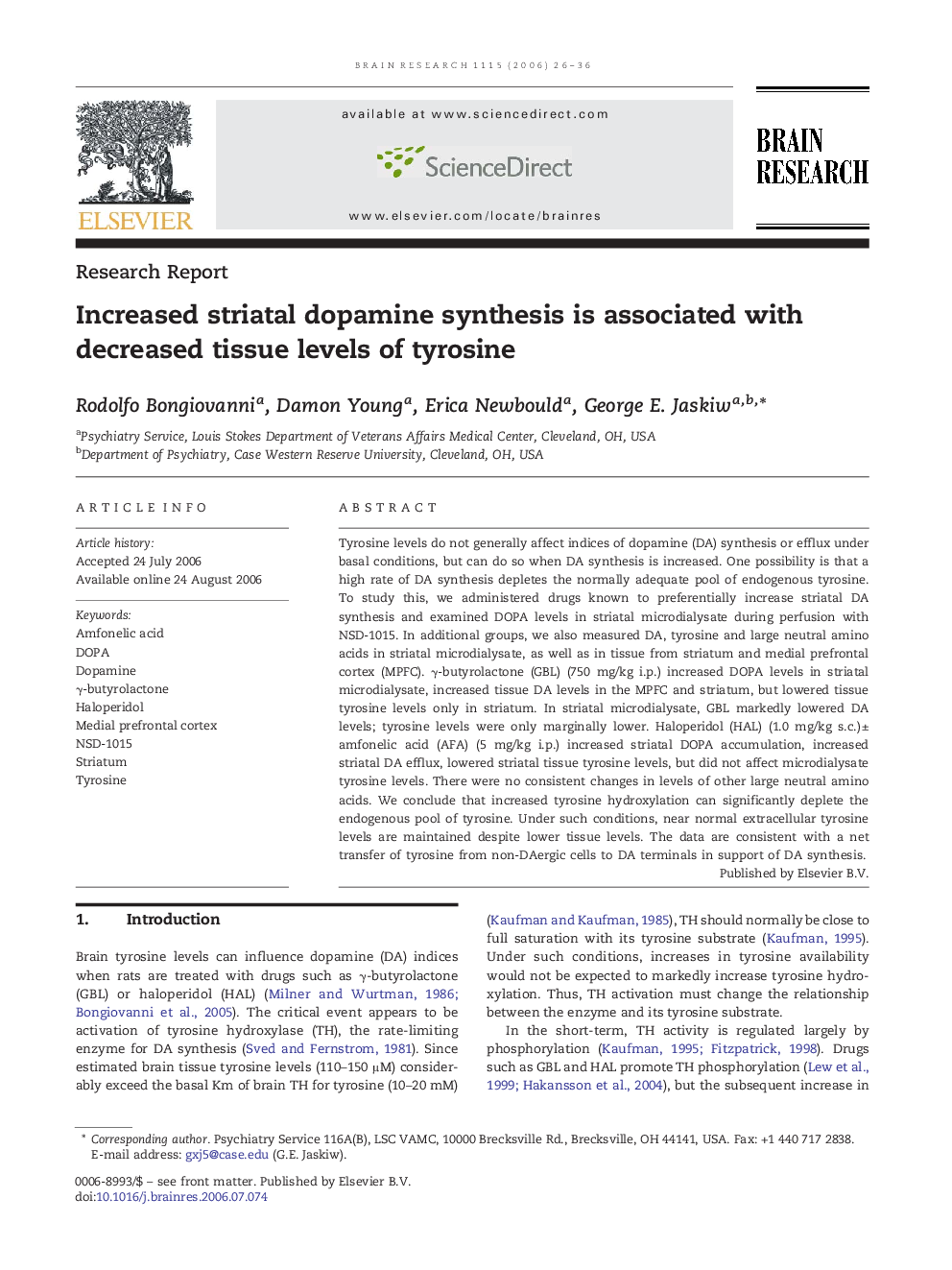| Article ID | Journal | Published Year | Pages | File Type |
|---|---|---|---|---|
| 4332285 | Brain Research | 2006 | 11 Pages |
Tyrosine levels do not generally affect indices of dopamine (DA) synthesis or efflux under basal conditions, but can do so when DA synthesis is increased. One possibility is that a high rate of DA synthesis depletes the normally adequate pool of endogenous tyrosine. To study this, we administered drugs known to preferentially increase striatal DA synthesis and examined DOPA levels in striatal microdialysate during perfusion with NSD-1015. In additional groups, we also measured DA, tyrosine and large neutral amino acids in striatal microdialysate, as well as in tissue from striatum and medial prefrontal cortex (MPFC). γ-butyrolactone (GBL) (750 mg/kg i.p.) increased DOPA levels in striatal microdialysate, increased tissue DA levels in the MPFC and striatum, but lowered tissue tyrosine levels only in striatum. In striatal microdialysate, GBL markedly lowered DA levels; tyrosine levels were only marginally lower. Haloperidol (HAL) (1.0 mg/kg s.c.) ± amfonelic acid (AFA) (5 mg/kg i.p.) increased striatal DOPA accumulation, increased striatal DA efflux, lowered striatal tissue tyrosine levels, but did not affect microdialysate tyrosine levels. There were no consistent changes in levels of other large neutral amino acids. We conclude that increased tyrosine hydroxylation can significantly deplete the endogenous pool of tyrosine. Under such conditions, near normal extracellular tyrosine levels are maintained despite lower tissue levels. The data are consistent with a net transfer of tyrosine from non-DAergic cells to DA terminals in support of DA synthesis.
